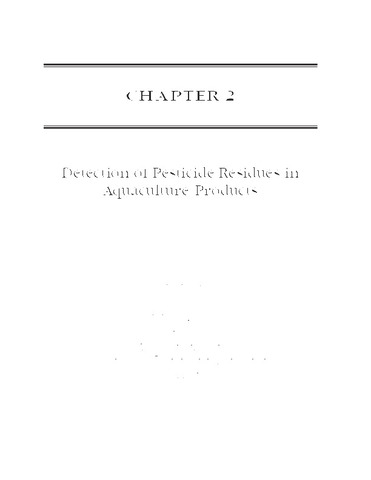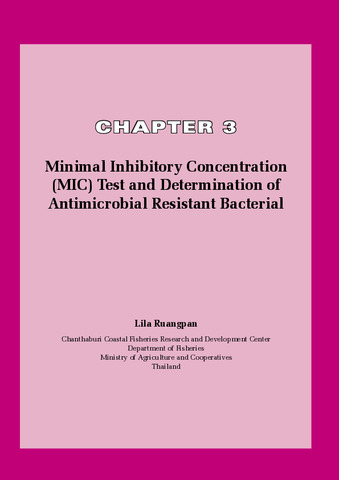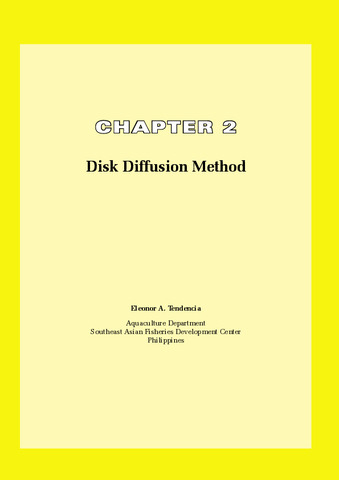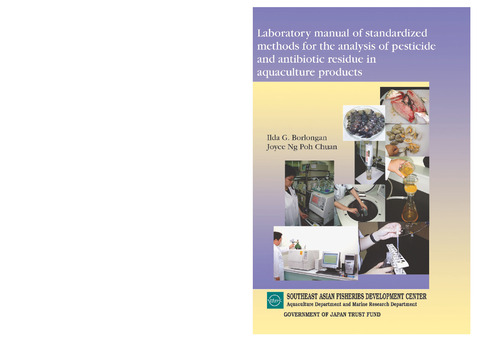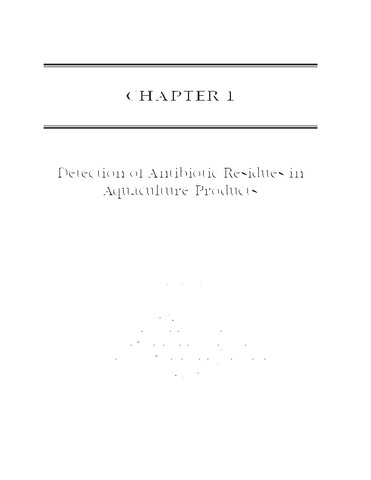Pencarian
Now showing items 1-6 of 6
Laboratory manual of standardized methods for antimicrobial sensitivity tests for bacteria isolated from aquatic animals and environment
(Aquaculture Department, Southeast Asian Fisheries Development Center., 2004)
The manual is one of the important outputs of a collection of studies related to antibiotic usage in order to come up with guidelines for its prudent usage. It offers a complete guide for testing bacterial susceptibility ...
Detection of pesticide residues in aquaculture products
(Aquaculture Department, Southeast Asian Fisheries Development Center, 2004)
Agricultural chemicals such as fertilizers and pesticides have made an important contribution to agriculture. Pesticides protect crops from pests and diseases. They have brought about large yield increases, and have helped ...
Minimal inhibitory concentration (MIC) test and determination of antimicrobial resistant bacteria
(Aquaculture Department, Southeast Asian Fisheries Development Center, 2004)
The agar dilution technique is used to measure qualitatively the in vitro activity of an antimicrobial agent against the test bacteria. In this method, graded amounts of antibiotics are incorporated in agar plates and ...
Disk diffusion method
(Aquaculture Department, Southeast Asian Fisheries Development Center, 2004)
Disk diffusion method is based on the principle that antibiotic-impregnated disk, placed on agar previously inoculated with the test bacterium, pick-up moisture and the antibiotic diffuse radially outward through the agar ...
Laboratory manual of standardized methods for the analysis of pesticide and antibiotic residue in aquaculture products
(Aquaculture Department, Southeast Asian Fisheries Development Center, 2004)
The manual contains guidelines on the detection of antibiotic and pesticide residues in aquaculture products. Different methods for the analysis of the two chemicals are discussed. The manual is expected to benefit all ...
Detection of antibiotic residues in aquaculture products
(Aquaculture Department, Southeast Asian Fisheries Development Center, 2004)
Aquacultured animals are under constant threat from bio-aggressors such as viruses, bacteria, parasites and fungi. These organisms harm either spontaneously or through aquatic animal husbandry practices, and often both. ...



